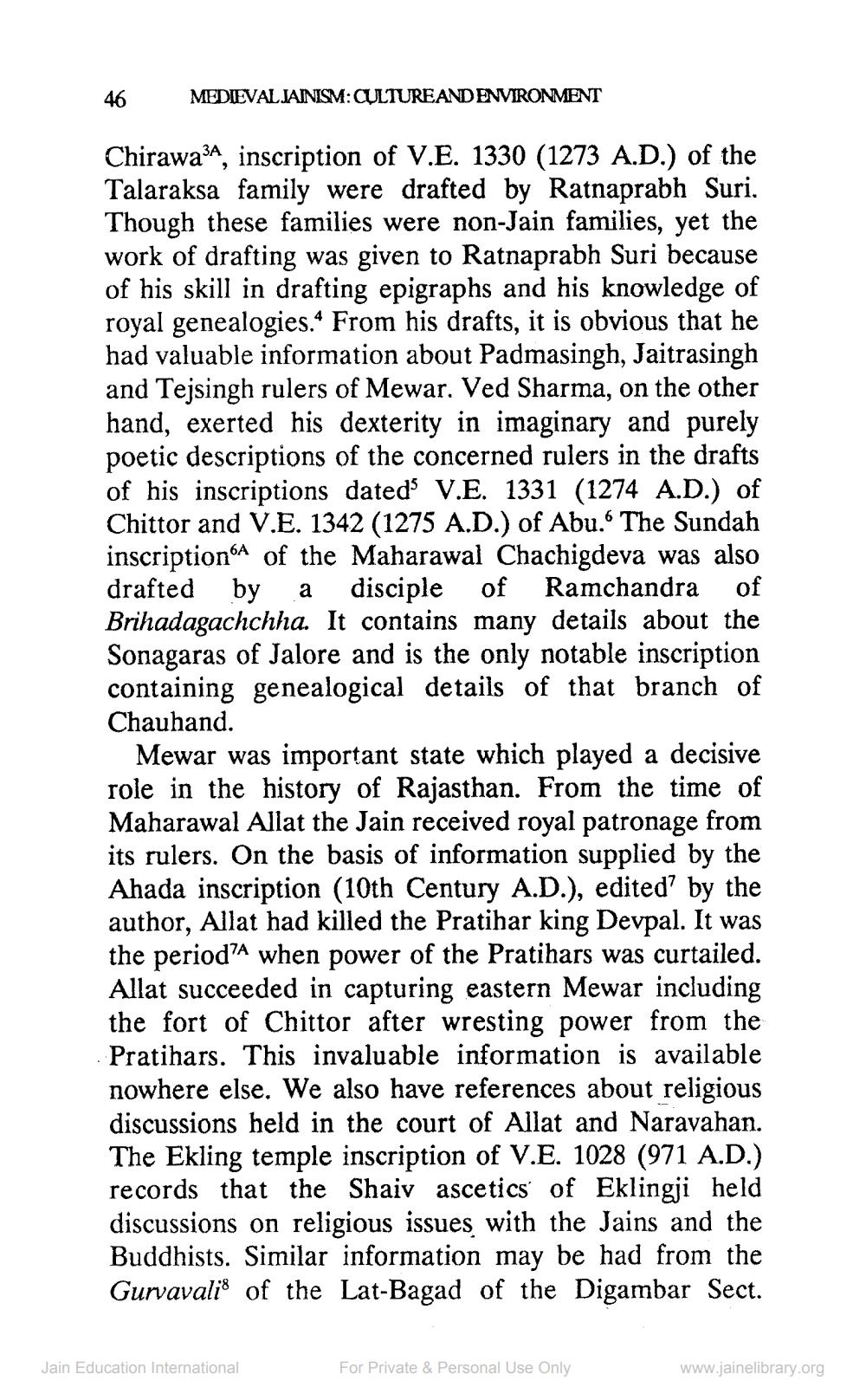________________
46
MEDIEVALJAINISM: CULTUREAND ENVIRONMENT
Chirawa34, inscription of V.E. 1330 (1273 A.D.) of the Talaraksa family were drafted by Ratnaprabh Suri. Though these families were non-Jain families, yet the work of drafting was given to Ratnaprabh Suri because of his skill in drafting epigraphs and his knowledge of royal genealogies. From his drafts, it is obvious that he had valuable information about Padmasingh, Jaitrasingh and Tejsingh rulers of Mewar. Ved Sharma, on the other hand, exerted his dexterity in imaginary and purely poetic descriptions of the concerned rulers in the drafts of his inscriptions dated' V.E. 1331 (1274 A.D.) of Chittor and V.E. 1342 (1275 A.D.) of Abu. The Sundah inscription of the Maharawal Chachigdeva was also drafted by a disciple of Ramchandra of Brihadagachchha. It contains many details about the Sonagaras of Jalore and is the only notable inscription containing genealogical details of that branch of Chauhand.
Mewar was important state which played a decisive role in the history of Rajasthan. From the time of Maharawal Allat the Jain received royal patronage from its rulers. On the basis of information supplied by the Ahada inscription (10th Century A.D.), edited by the author, Allat had killed the Pratihar king Devpal. It was the period?A when power of the Pratihars was curtailed. Allat succeeded in capturing eastern Mewar including the fort of Chittor after wresting power from the Pratihars. This invaluable information is available nowhere else. We also have references about religious discussions held in the court of Allat and Naravahan. The Ekling temple inscription of V.E. 1028 (971 A.D.) records that the Shaiv ascetics of Eklingji held discussions on religious issues with the Jains and the Buddhists. Similar information may be had from the Gurvavalil of the Lat-Bagad of the Digambar Sect.
Jain Education International
For Private & Personal Use Only
www.jainelibrary.org




